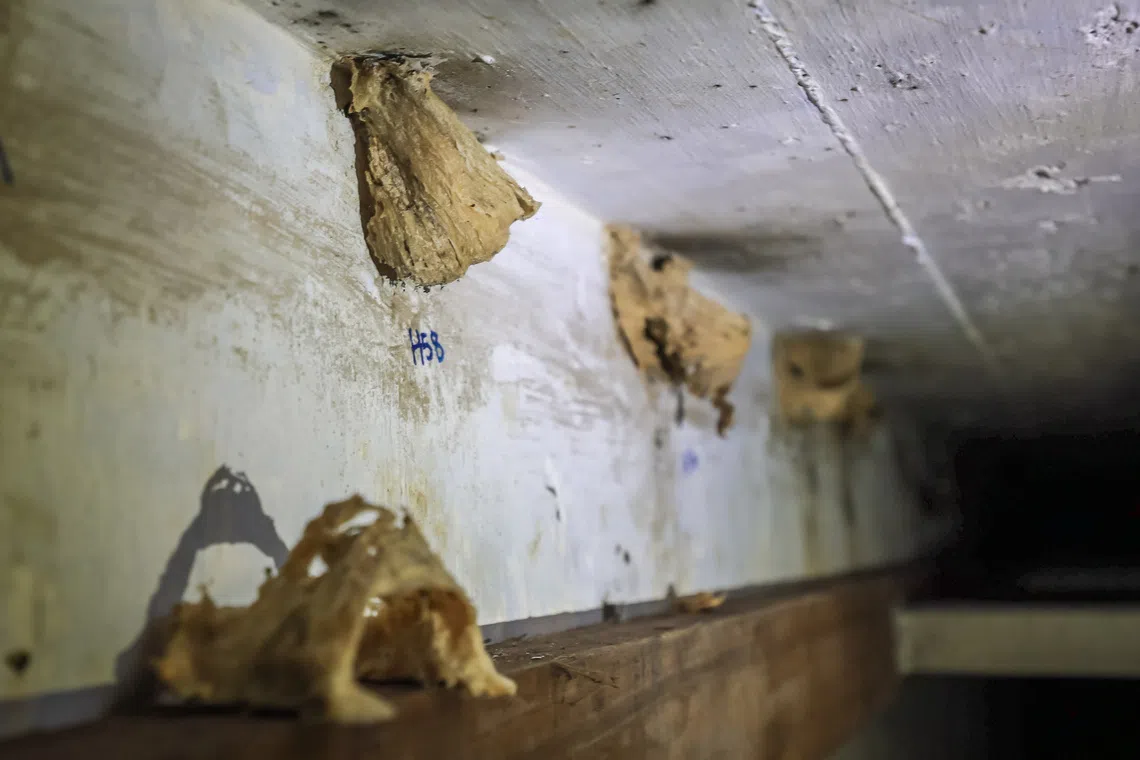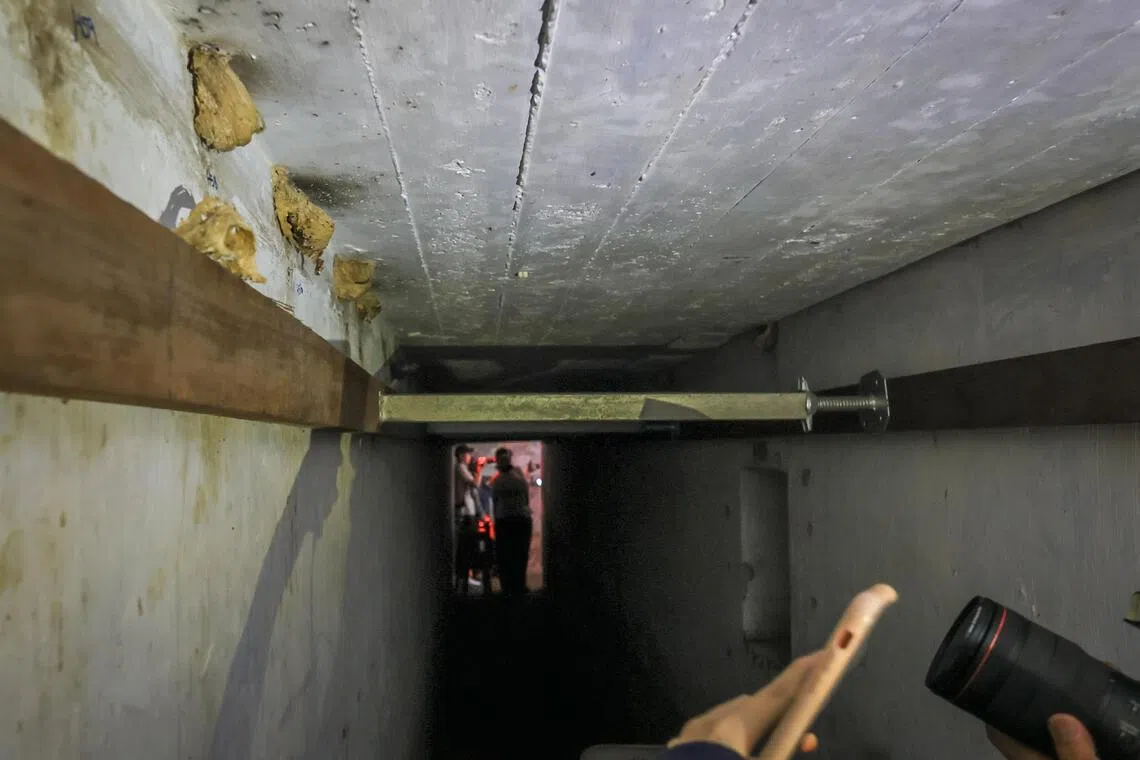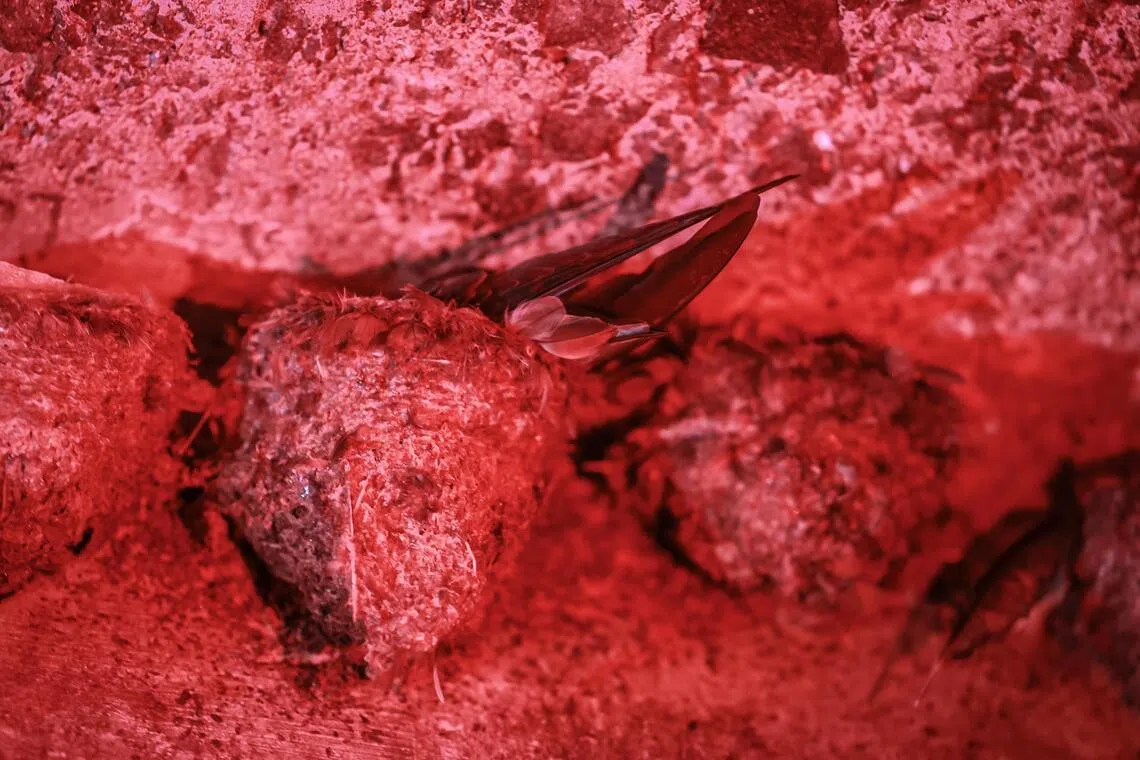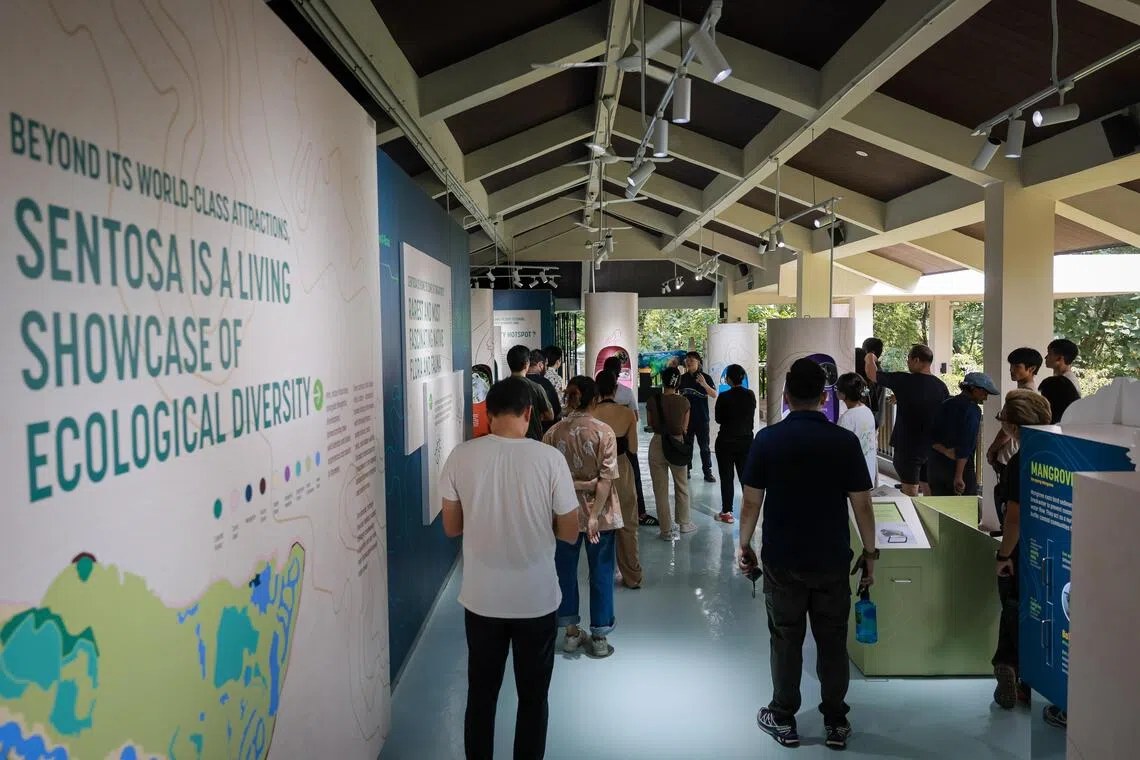Learn more about S’pore’s largest known colony of swiftlets from Aug 2 in Sentosa
Sign up now: Get ST's newsletters delivered to your inbox

The nests of edible-nest swiftlets in a World War II bunker in Mount Imbiah. The species can be definitively identified only through their nests, because they are virtually indistinguishable from black-nest swiftlets.
ST PHOTO: GAVIN FOO
Follow topic:
- An exhibition offers a glimpse into Singapore's largest edible-nest and black-nest swiftlet colony located in a World War II military bunker.
- The colony, discovered over a decade ago, has doubled to 250 nests due to conservation efforts.
- Visitors can learn about swiftlet research and Sentosa's nature preservation efforts, with free child-friendly programmes from Aug 2 to 10.
AI generated
SINGAPORE – Hidden amid luxury hotels in Sentosa, a World War II military bunker has been an exclusive sanctuary for swiftlets for decades, sheltering them from those who covet their nests for touted health benefits.
From Aug 2, the public can get their first glimpse of life inside the home of Singapore’s largest known colony of edible-nest and black-nest swiftlets via a replica of the bunker in the resort island’s refreshed Nature Discovery learning hub.
Located in a defunct monorail station, the hub in Mount Imbiah opens from 9am to 5pm daily, and acts as a gateway to Sentosa’s natural habitats and its roughly 850 kinds of flora and fauna.
Following a two-month revamp, the space, which can be accessed for free, features a replica of the military bunker along with the latest insights into the swiftlets’ habits.
Other parts of the gallery spotlight unique species like a slow-growing climber that can be found only on Sentosa’s rocky outcrops, and a feisty mantis shrimp,
Unlike farms that lure swiftlets for their nests, which are prized as delicacies, the British bunker’s colonisation began entirely by the birds’ design.
In the wild, both species belong to a group of swifts drawn to nesting under a cloak of complete darkness, which they navigate with clicking noises that generate a real-time audio map of the landscape.
More than 120 swiftlet nests were first recorded in the bunker in 1987, after the birds were spotted circling the flooded military installation, said Sentosa Development Corporation’s director of environmental management Grace Lee.
Since the colony was discovered, the corporation has pulled out all the stops to protect it.

More than 120 swiftlet nests were first recorded at the bunker in 1987.
ST PHOTO: GAVIN FOO
This includes restricting access, barricading the colony more than a decade ago after signs of intrusion were discovered, and ridding the passageways of cockroaches to ensure that the nests are not devoured.
Ms Lee added: “We want to allow the swiftlets to have the assurance that they can live here comfortably.”
Today, the colony has doubled to 250 nests, as Sentosa tightly manages access to the bunker, which attracts birdwatchers and academics from Singapore and beyond.
By virtue of the colony being a haven, researchers have found that the swiftlets opportunistically re-use one another’s nests over multiple years.
On occasion, this results in a black-and-white nest, which indicates that one species has renovated the other’s nest, according to Dr Keren Sadanandan, who has been studying the colony since 2018.

Black-nest swiftlets roosting in a World War II bunker in Mount Imbiah on Sentosa on Aug 1, 2025.
ST PHOTO: GAVIN FOO
The NUS research fellow said: “It’s good that these birds can spend their energy on breeding rather than continuously having to remake their nests, which is the case in most of South-east Asia because the nests are harvested very aggressively.”
Her research into the colony is the fruit of an ongoing collaboration between the corporation, researchers from NUS, the Max Planck Institute for Biological Intelligence in Germany and volunteers of the Bird Society of Singapore.
As part of the exhibition, visitors can put themselves in the shoes of these researchers, who collect data about the swiftlets through a range of methods.
These include the use of mirrors attached to selfie sticks to view the nests.

Visitors at Sentosa’s refreshed Nature Discovery learning hub on Aug 1, 2025.
ST PHOTO: GAVIN FOO
Ms Lee said the exhibition aims to cultivate a love for Sentosa’s natural heritage. “(The island) is a living, breathing ecosystem that we really need to protect and continue to enhance, to make it an even better place for our guests and for future generations.”
The exhibition builds on the corporation’s efforts to bolster conservation on the island, with protected nature areas of about 40ha, or less than 10 per cent of its total land.
As part of the hub’s reopening on Aug 2, the Bird Society of Singapore has collaborated with the corporation to conduct a fully booked tour of the bunker for just 15 visitors, while being mindful of minimising disruption to the birds. There are plans to organise more of such visits in the future.
The society’s president Movin Nyanasengeran said the rare opportunity to visit the bunker is highly sought after by members of the birdwatching community, who are determined to see all the Republic’s bird species.
The native edible-nest swiftlet species can be definitively identified only through their nests, because they are virtually indistinguishable from black-nest swiftlets.
Dr Movin said: “To conclusively add the edible-nest swiftlets to their lists, hobbyists have to go to the bunker in Sentosa, which has the largest known concentrations of the species.”
Between Aug 2 and 10, the public can participate in free child-friendly programmes, such as a guided adventure across the island’s green spaces, to learn more about nature.
More details can be found on this website


